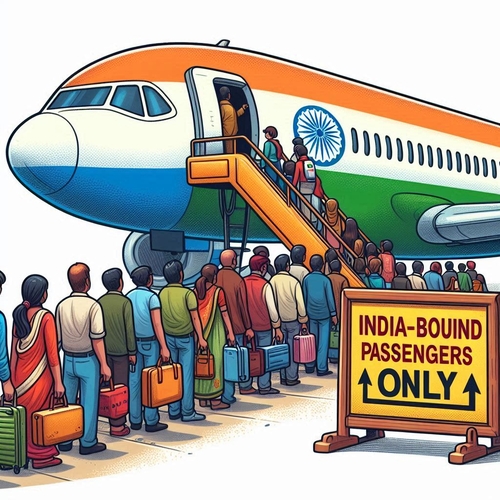Did the Apostle Thomas Visit India?
The disciple who once demanded to see Jesus’s wounds before believing may have travelled farther than any other apostle to spread the Gospel. According to ancient tradition, Thomas—forever known as “Doubting Thomas”—journeyed to India around AD 52, planted seven churches, and died a martyr’s death on the subcontinent.
For millions of Saint Thomas Christians in Kerala, India, this isn’t mere tradition—it’s historical fact. Their churches “ecclesiastically, liturgically, and linguistically represent one of the oldest Christian traditions in the world”, predating both Roman Catholic missions and Anglican influence by over a millennium. As they rightly point out, the absence of evidence isn’t evidence of absence…
DID THE APOSTLE THOMAS VISIT INDIA? WHAT SCRIPTURE REVEALS (AND DOES NOT)
The Bible gives us glimpses of Thomas’ character—his honest doubt, his eventual bold declaration of Jesus as “My Lord and my God!” (John 20:28), and his presence with the other disciples after Christ’s ascension. We know Jesus commissioned the apostles to go “to the ends of the earth” (Acts 1:8), and India certainly qualified as earth’s edge in the first century.
But Scripture remains silent on Thomas’ specific destination. The silence doesn’t disprove the India tradition, but it reminds us God’s Word, not human tradition, remains our ultimate authority for faith and practice.
THE HISTORICAL FOUNDATION: MORE THAN TRADITION
The case for Thomas in India rests on substantial historical foundations that deserve serious consideration. According to tradition, Thomas came to Muziris on the Kerala coast in AD 52, in present-day Pattanam, near Kodungallur. But this wasn’t an impossible journey for a first-century Palestinian Jew.
Established Trade Networks: Ancient Rome maintained robust trade relationships with South India’s Malabar Coast, where spices commanded premium prices in Mediterranean markets. Ships regularly sailed from Red Sea ports to Kerala, carrying merchants, goods, and inevitably, ideas. For an apostle seeking to fulfil the Great Commission, these established routes provided practical pathways to “the ends of the earth.”
Jewish Communities as Gospel Bridges: Perhaps most significantly, the Cochin Jews are known to have existed in Kerala in the 1st century AD. This presence of Jewish merchants and settlers created natural entry points for Christian witness. Thomas, as a Palestinian Jew familiar with synagogue culture, would have found established communities where he could initially proclaim Jesus was the promised Messiah.
Scholars say both Jewish and Christian merchants of the region took part in the Arabian Sea trade with Kerala, suggesting ongoing connections between the Middle East and South India. The presence of Jewish communities makes Thomas’ arrival not just plausible, but strategically logical.
Archaeological and Cultural Evidence: The Saint Thomas Christians of Kerala possess distinctive liturgical traditions, architectural styles, and cultural practices that suggest ancient origins rather than later missionary influence. Their Syrian-influenced traditions, Aramaic liturgical elements, and unique theological perspectives differ markedly from later Portuguese Catholic impositions or British Protestant missions.
Historians surmise the diverse, rich trading centre of Kerala may well have drawn this Palestinian Jew of the Roman Empire who wished to preach the Gospel. The cultural and commercial connections make such a journey entirely feasible within first-century realities.
DID THE APOSTLE THOMAS VISIT INDIA? THE WITNESS OF SURVIVAL
The most compelling evidence may be the churches themselves. When Portuguese explorers reached India in the late 15th century, they discovered thriving Christian communities that had survived centuries of political upheaval, religious persecution, and cultural pressure. These weren’t recent converts but established churches with ancient traditions.
Portuguese missionaries later destroyed most of the ancient church writings, replacing them with their own, yet the communities persisted. This survival through Hindu kingdoms, Muslim conquests, and colonial pressures suggests foundations deeper than ordinary human establishment.
The Mar Thoma Syrian Church, which underwent Reformed influence in the 19th century, continues to honour its apostolic heritage while embracing biblical authority. Their story illustrates how authentic Christian witness transcends denominational boundaries and historical uncertainties.
A REFORMED ASSESSMENT: PLAUSIBLE AND PROVIDENTIAL
From a Reformed perspective, the evidence for Thomas’ Indian mission appears substantially more plausible than implausible. The established trade routes, existing Jewish communities, early Christian expansion patterns, and the remarkable survival of distinctively ancient Christian traditions create a cumulative case that merits serious consideration.
More importantly, whether or not Thomas personally planted these churches, the Gospel clearly reached India in Christianity’s earliest centuries. The Saint Thomas Christians represent an authentic Christian witness that predates European missions by over a millennium. Their testimony deserves respect, not scepticism rooted in Western assumptions about early Christian geography.
THE ACTS OF THOMAS: A SEPARATE QUESTION
The Acts of Thomas requires separate consideration from the historical question of Thomas’ Indian mission. This document was likely authored before 240 AD, with scholars detecting from the Greek that its original was written in Syriac, placing it in Edessa. The text is part of Gnostic literature dealing with Gnosis and Gnosticism, containing theological elements that contradict biblical Christianity.
Reformed Christians, including those in India, rightly reject the Acts of Thomas as canonical Scripture because:
- Late authorship: Written at least 150 years after apostolic times
- Unknown author: Not actually written by Thomas despite its claims
- Gnostic theology: Contains doctrinal errors incompatible with biblical teaching
- Legendary content: Includes fantastical elements that strain credibility
- Church rejection: Never accepted by the early church as authentic apostolic writing
The Acts of Thomas belongs in the category of apocryphal literature—potentially containing historical kernels but mixed with theological error and legendary embellishment.
DID THE APOSTLE THOMAS VISIT INDIA? THE GREATER STORY
Whether Thomas personally reached India or not, the Gospel clearly did. The Saint Thomas Christians represent one of Christianity’s most remarkable survival stories—maintaining their faith through 15 centuries of challenges that would have destroyed lesser communities.
Their witness testifies to God’s sovereignty over mission rather than human achievement. The same Spirit who empowered Thomas’ confession of Jesus as Lord empowered believers to carry the Gospel across dangerous seas to distant shores and sustain it through generations of trial.
The Thomas tradition calls modern Christians to the same bold obedience to the Great Commission. India’s early Christians, whether founded by Thomas or other faithful witnesses, model willingness to cross cultural boundaries, learn new languages, and plant churches among strangers.
DID THE APOSTLE THOMAS VISIT INDIA? RELATED FAQs
Where exactly is Thomas supposed to have landed in India, and why there? According to tradition, Thomas arrived at Muziris (modern-day Pattanam near Kodungallur) on Kerala’s Malabar Coast around AD 52. The location wasn’t random—Muziris was ancient India’s most important spice port, where Roman merchants regularly docked to trade for pepper, cardamom, and other valuable spices. The established trade networks and existing Jewish merchant communities made it a strategic entry point for Gospel witness.
- What are the “Seven Churches of Saint Thomas” and do they still exist? The seven churches traditionally attributed to Thomas’ ministry are located across Kerala and include Kodungallur (Cranganore), Niranam, Nilackal, Kokkamangalam, Kottakkavu, Palayoor, and Thiruvithamcoor (Chayal). Several of these locations still have active Christian communities claiming apostolic origins, though the original church structures have been rebuilt multiple times over the centuries. The Palayoor church is particularly notable as it reportedly converted from a Hindu temple where Thomas preached.
- Are there alternative claims about where Thomas went if not to India? Several early traditions place Thomas in different locations, though none are as well-documented as the Indian tradition. Some early sources suggest he ministered among the Parthians in present-day Iran and Iraq, which would align with the eastward missionary pattern of other apostles. A few late medieval traditions claim he traveled to Ethiopia or even China, though these lack substantial historical support. The Mesopotamian/Parthian theory has some plausibility given the established Jewish communities there and the region’s role as a bridge between the Roman and Eastern worlds. However, these alternative traditions are generally weaker in both documentary evidence and living church witness compared to the Indian claim.
What’s the relationship between the Saint Thomas Christians and the Syrian Orthodox Church? The connection developed through Mesopotamian/Syrian merchants who travelled the same trade routes to Kerala. By the 4th century, Syrian bishops were providing ecclesiastical oversight to the Indian Christians, establishing liturgical and theological connections that persist today. This Syrian influence explains why many Saint Thomas Christian churches use Syriac liturgy and maintain ties to Antioch traditions, though they insist their apostolic origins predate this Syrian connection.
- Did Thomas really die as a martyr in India, and where? Tradition holds Thomas was martyred around AD 72 at St. Thomas Mount (Parangimalai) near Chennai (formerly Madras) in Tamil Nadu, not in Kerala where he first landed. The story claims he was killed by spear while praying in a cave, though historical verification remains impossible. The San Thome Basilica in Chennai was built over what is believed to be his burial site, making it a significant pilgrimage destination for Indian Christians.
- How do the Saint Thomas Christians differ from later Catholic and Protestant missions in India? The Saint Thomas Christians developed unique theological and cultural characteristics distinct from later European missions. They practiced clerical marriage, used Syriac liturgy, and developed indigenous art and architectural styles that blended Christian and local elements. Unlike later missions that often required converts to abandon local customs, the Saint Thomas tradition demonstrates early contextualisation of Christian faith within Indian culture while maintaining doctrinal orthodoxy.
What role did the Portuguese play in Saint Thomas Christian history? The Portuguese arrival in 1498 dramatically disrupted Saint Thomas Christian life through the Synod of Diamper (1599), which forced liturgical changes and destroyed many ancient manuscripts and church records. This “Latinisation” attempt created lasting divisions within the community, with some accepting Roman Catholic authority while others resisted and maintained their traditional independence. The Portuguese period ironically provides some of our best historical documentation of pre-European Indian Christianity, even as it sought to suppress many of its distinctive features.
DID THE APOSTLE THOMAS VISIT INDIA? OUR RELATED POSTS
- Did Jesus Travel to India? Examining the Modern Deception
- How Many Times Did the Rooster Crow at Peter’s Denial?
- From Saul to Paul: The Truth Behind the Apostle’s Name Change
Editor’s Pick

How Many Times Did the Rooster Crow at Peter’s Denial?
THE CHALLENGE When sceptics want to undermine Scripture’s reliability, they often point to Peter’s denial as Exhibit A for supposed [...]

Biblical and Systematic Theology: Why Do We Need Both?
TWO LENSES, ONE TRUTH Picture this familiar scene: A seminary student sits in the library, torn between two stacks of [...]

The Mysterious Two: Who Are the Anointed Ones in Zechariah?
Picture this: a golden lampstand blazing with light, flanked by two olive trees that pour oil directly into the lamp’s [...]

Regeneration Or Faith? Which Comes First in Salvation?
In the moment of salvation, does God regenerate our hearts first, or do we believe first? How we answer this [...]

Interracial Marriages: Does God Frown On Them?
The question hits close to home for many Christian couples and families today. As our churches become increasingly diverse, believers [...]
‘Because Angels Are Watching’: What Does 1 Corinthians 11:10 Mean?
“For this reason the woman ought to have authority on her head, because of the angels” (1 Corinthians 11:10, ESV). [...]

Why Does God Torment Saul With An Evil Spirit?
Would a holy God send an evil spirit to torment someone? This theological puzzle confronts us in the biblical account [...]

Paul’s Teaching on Women’s Roles: 1 Timothy 2:12 Explained
YARBROUGH’S BIBLICAL CASE FOR COMPLEMENTARIANISM In a world of shifting cultural values, few biblical texts generate as much discussion as [...]

What Does the Bible Really Mean By ‘The Flesh’?
8The phrase "the flesh" appears over 150 times in the New Testament, making it one of the most significant theological [...]

Does God Still Talk Directly To His People?
"God told me to take this job." "I feel the Lord leading me to marry her." Such phrases echo through [...]






